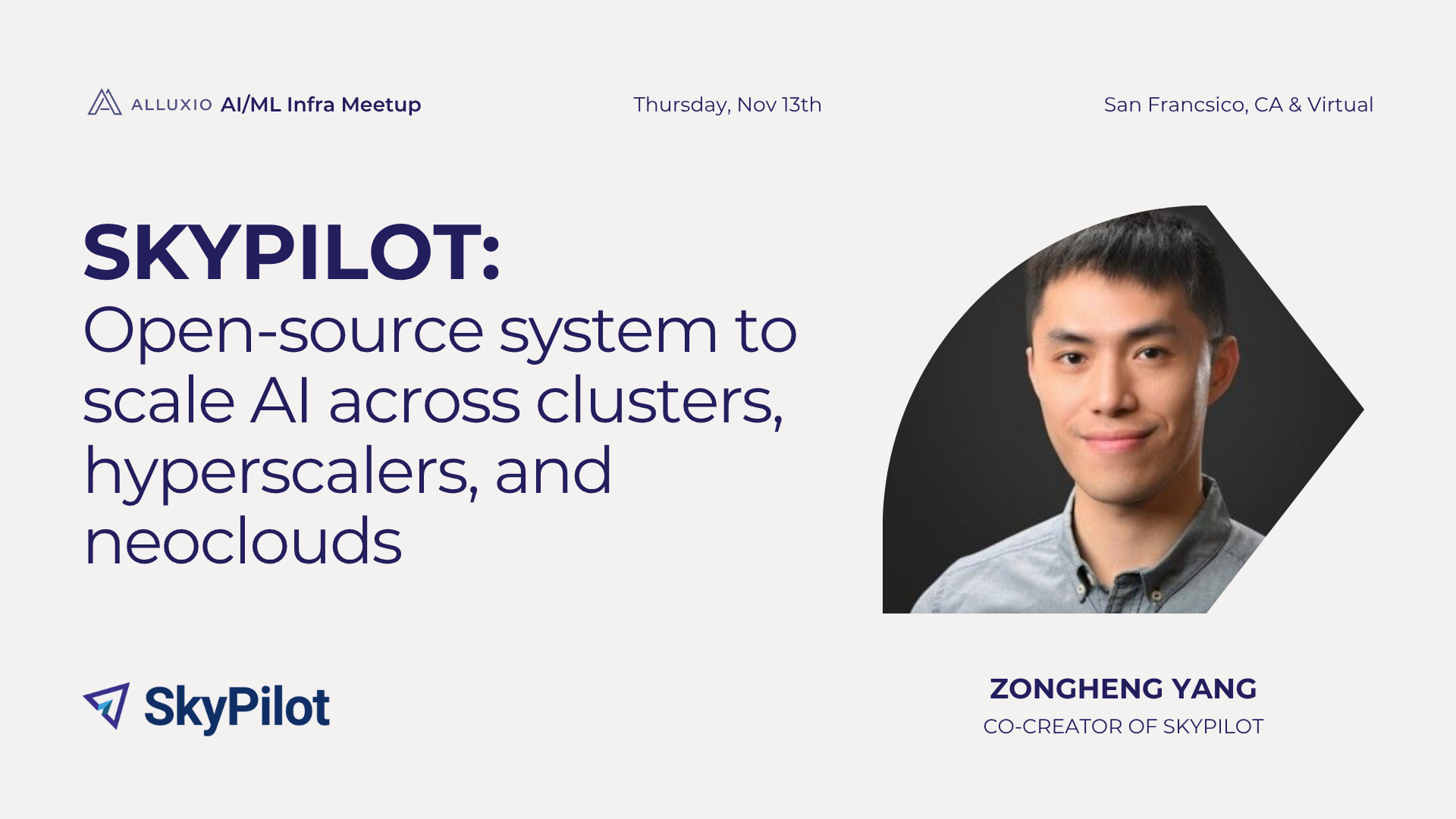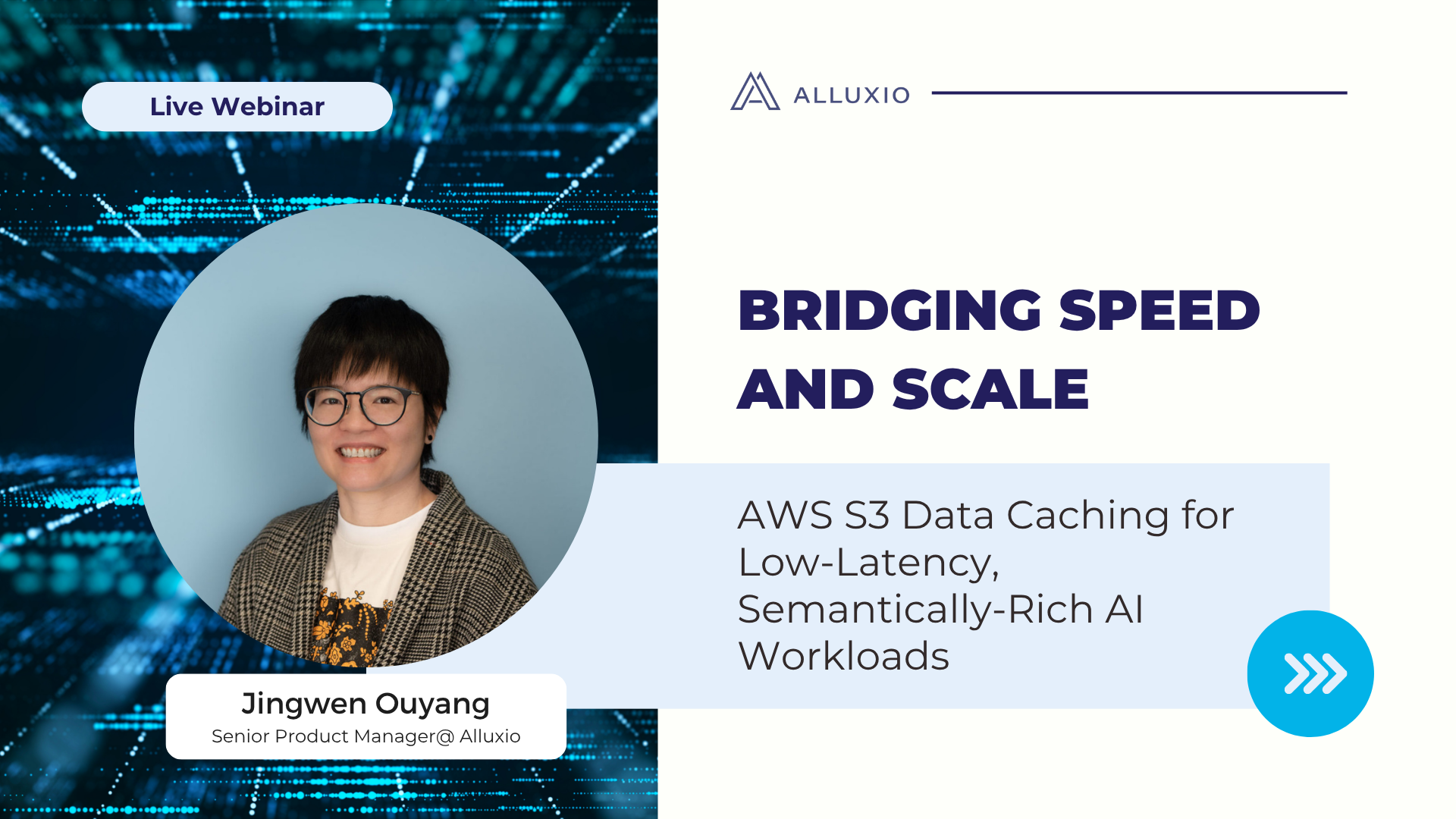Products
Data Orchestration for AI, Big Data, and Cloud
October 3, 2019
The data ecosystem has heavily evolved over the past two decades. There’s been an explosion of data-driven frameworks, such as Presto, Hive, and Spark to run analytics and ETL queries and TensorFlow and PyTorch to train and serve models. On the data side, the approach to managing and storing data has evolved from HDFS to cheaper, more scalable and separated services typified by cloud stores like AWS S3. As a result, data engineering has become increasingly complex, inefficient, and hard, particularly in hybrid and cloud environments.
Haoyuan Li offers an overview of a data orchestration layer that provides a unified data access and caching layer for single cloud, hybrid, and multicloud deployments. It enables distributed compute engines like Presto, TensorFlow, and PyTorch to transparently access data from various storage systems (including S3, HDFS, and Azure) while actively leveraging an in-memory cache to accelerate data access.
The data ecosystem has heavily evolved over the past two decades. There’s been an explosion of data-driven frameworks, such as Presto, Hive, and Spark to run analytics and ETL queries and TensorFlow and PyTorch to train and serve models. On the data side, the approach to managing and storing data has evolved from HDFS to cheaper, more scalable and separated services typified by cloud stores like AWS S3. As a result, data engineering has become increasingly complex, inefficient, and hard, particularly in hybrid and cloud environments.
Haoyuan Li offers an overview of a data orchestration layer that provides a unified data access and caching layer for single cloud, hybrid, and multicloud deployments. It enables distributed compute engines like Presto, TensorFlow, and PyTorch to transparently access data from various storage systems (including S3, HDFS, and Azure) while actively leveraging an in-memory cache to accelerate data access.
Videos:
Presentation Slides:
Complete the form below to access the full overview:
.png)
Videos
AI/ML Infra Meetup | Bringing Data to GPUs Anywhere + Get Low-Latency on Object Store with Alluxio

In this talk, Bin Fan, VP of Technology at Alluxio, explores how to enable efficient data access across distributed GPU infrastructure, achieving low-latency performance for feature stores and RAG workloads.
November 13, 2025
AI/ML Infra Meetup | SkyPilot: Open-source System to Scale AI across Clusters, Hyperscalers, and Neoclouds

Hear from Zongheng Yang, Co-Creator of SkyPilot, as he explores how to simplify AI deployment across clouds and on-premises infrastructure with automated resource provisioning and cost optimization.
November 13, 2025
Bridging Speed and Scale: AWS S3 Data Caching for Low-Latency, Semantically-Rich AI Workloads

Amazon S3 and other cloud object stores have become the de facto storage system for organizations large and small. And it’s no wonder why. Cloud object stores deliver unprecedented flexibility with unlimited capacity that scales on demand and ensures data durability out-of-the-box at unbeatable prices.
Yet as workloads shift toward real-time AI, inference, feature stores, and agentic memory systems, S3’s latency and limited semantics begin to show their limits. In this webinar, you’ll learn how to augment — rather than replace — S3 with a tiered architecture that restores sub-millisecond performance, richer semantics, and high throughput — all while preserving S3’s advantages of low-cost capacity, durability, and operational simplicity.
We’ll walk through:
- The key challenges posed by latency-sensitive, semantically rich workloads (e.g. feature stores, RAG pipelines, write-ahead logs)
- Why “just upgrading storage” isn’t sufficient — the bottlenecks in metadata, object access latency, and write semantics
- How Alluxio transparently layers on top of S3 to provide ultra-low latency caching, append semantics, and zero data migration with both FSx-style POSIX access and S3 API access
- Real-world results: achieving sub-ms TTFB, 90%+ GPU utilization in ML training, 80X faster feature store query response times, and dramatic cost savings from reduced S3 operations
- Trade-offs, deployment patterns, and best practices for integrating this tiered approach in your AI/analytics stack
October 28, 2025
